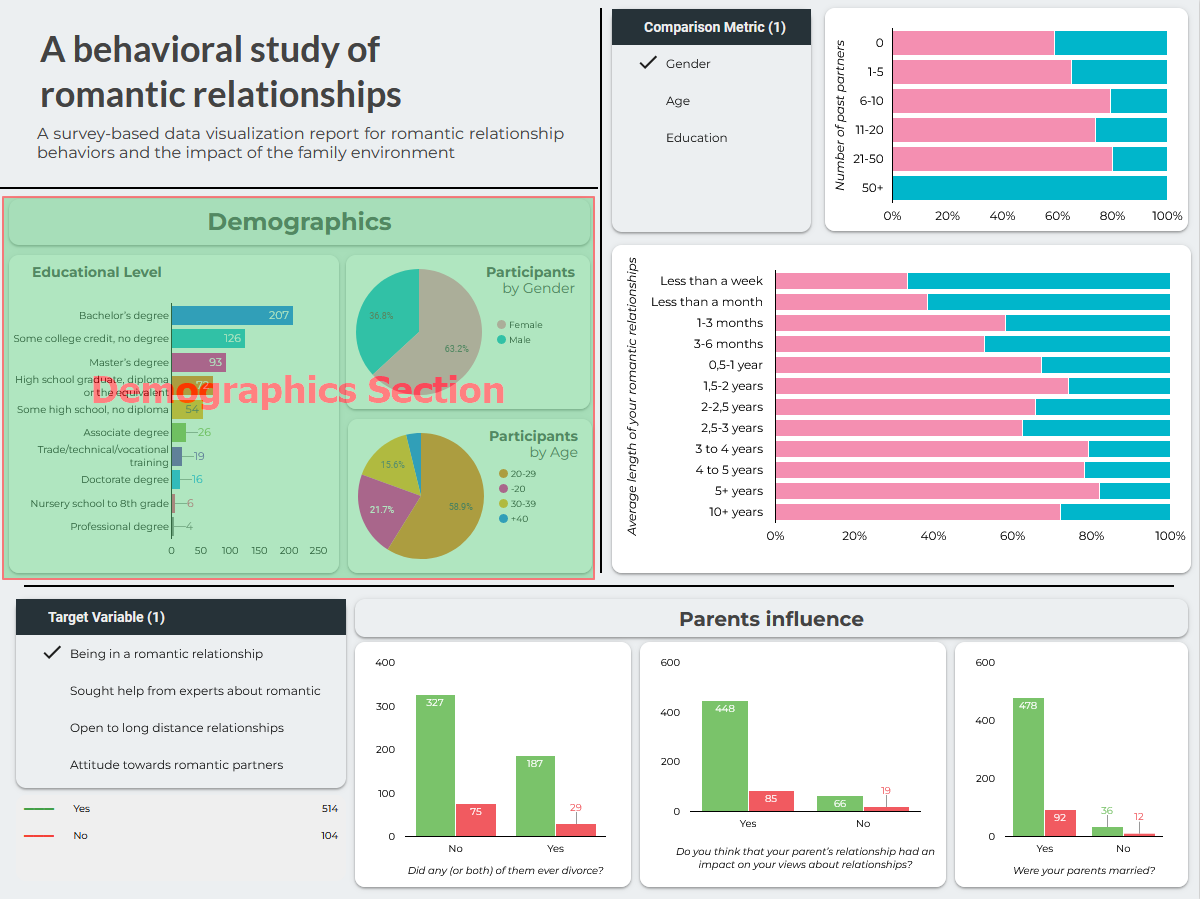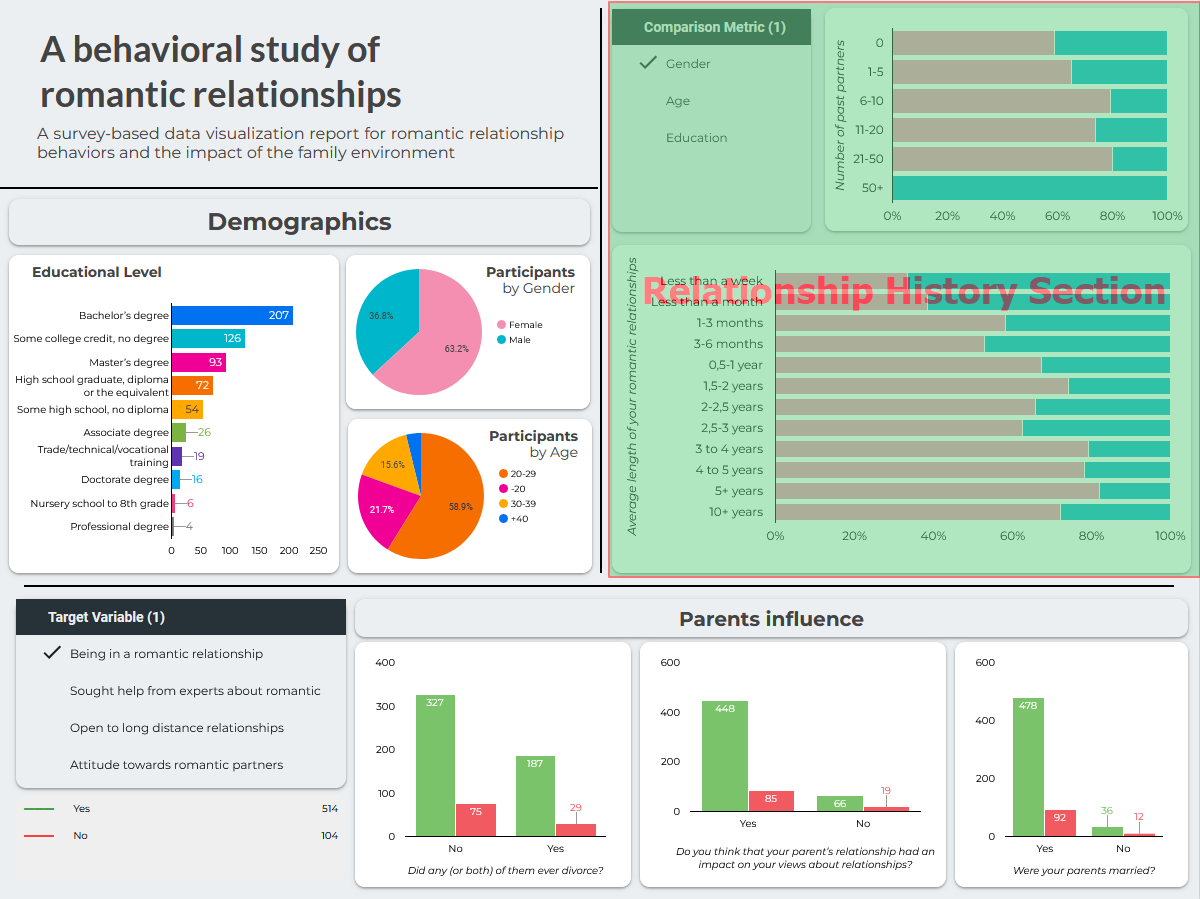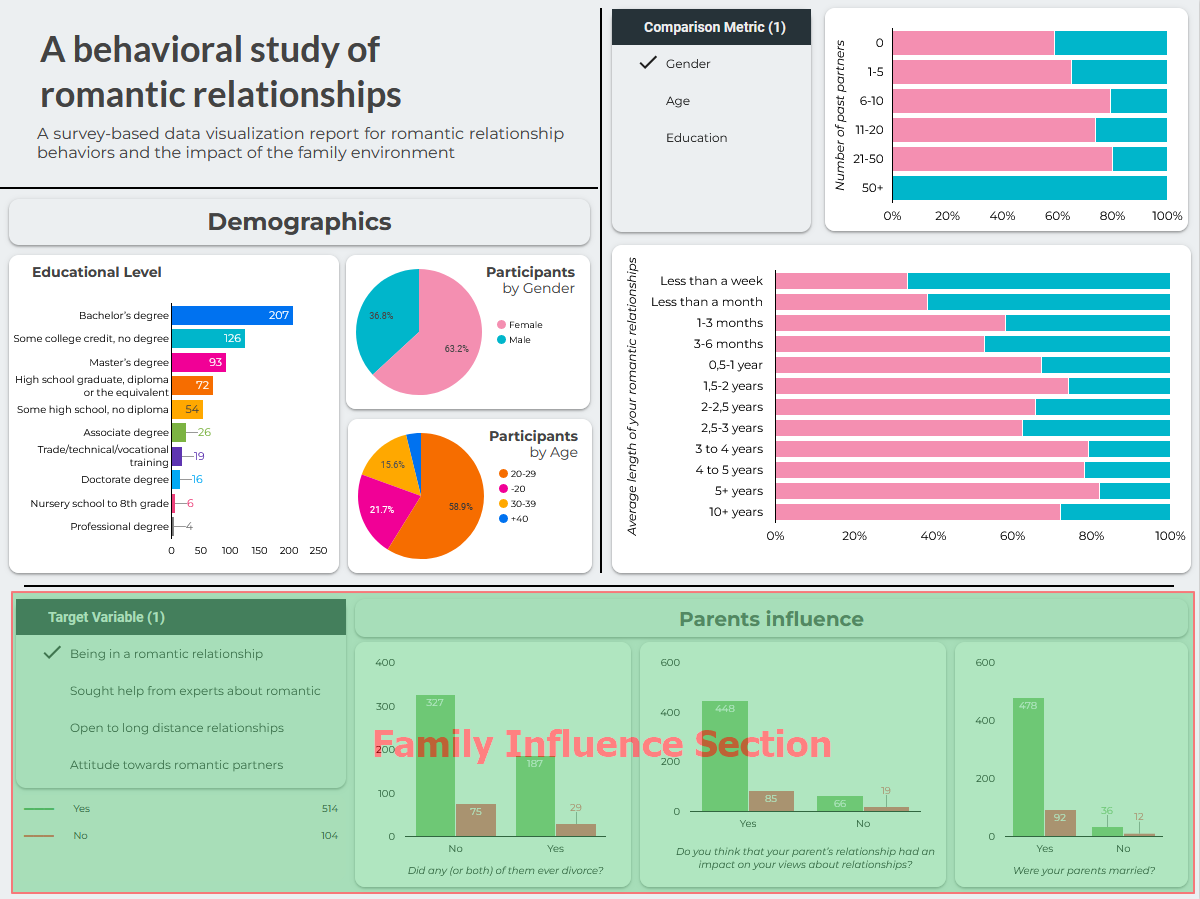

1. Demographics Section
The section was created to navigate the landscape of participant characteristics, offering a comprehensive view of the survey's diverse participant base, and enabling for cross filtering using these characteristics.
- Essential demographic data, including gender, age, and education levels.
- Clear overview of the survey’s participant characteristics.


